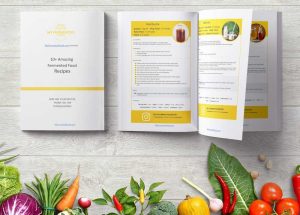Description
Here are step by step instructions on how to make mead at home.
Ingredients
- 15 lbs orange blossom honey
- 4 gallons distilled water chilled in refrigerator
- 2 packets yeast (explained below)
You can find good mead yeasts at any DIY wine store. Go in for WYeast 4184 or WLP 720 for sweet mead, or WYeast 4632 for dryer mead. You can also use generic wine yeast for dry mead or sweet wine yeast for sweeter mead. EC-1118 Champagne yeast is also good for mead making. It is solid, dependable yeast that produces smooth tasting mead.
Equipment
- Stainless steel stockpot
- Thermometer
- Plastic fermenter
- Glass carboy
- Fermentation lock and stopper
- Racking equipment (optional)
- Sanitizer/bleach
Instructions
- Sanitize all the equipment with bleach or sanitizer.
- Combine the water and honey to make a mixture called the must. Do this in the stainless steel stockpot. There are two ways of making must:
Method 1
• Heat the water to boiling point, then let the temperature drop to about 75°C or 167°F.
• Now add the honey to the water.
Method 2
• This method is suitable for aromatic flavored honey having a delicate, floral aroma that tends to get destroyed due to the heat. Honey is sterile and unlikely to contain yeast. So this method is suitable for the orange blossom honey we are using.
• Heat water to only about 37-40°C or 98-104°F.
• Warm the jars of honey in bath of hot water. (Note: the water bath should be hot, not boiling.) This will dissolve any crystallized honey in the bottle.
• Now tip the honey into the water.
• Whichever method you use, the honey should be completely dissolved in water.
• Chill the must. - Pour the chilled must into a plastic fermenter which is half filled with cold water.
- Stir the mixture with a clean, sanitized spoon.
- Once the must is at the right temperature, add the yeast:
- Activate the yeast as stated on the packet instructions.
- Use a thermometer to ensure that the must is 35-43°C or 95-110°F.
- Add activated yeast in the must, stir it well, and let sit for 15-20 minutes.
- Stir the yeast and must mixture vigorously for few minutes. Now it is time to allow the must to ferment. You can affix fermentation lock on the plastic fermenter.
- Snap the fermenter shut and place it in a clean, dark area where it won’t be disturbed.
- Ambient temperature ideal for mead fermentation is between 16-24°C or 60-75°F.
- Note that mead fermentation is a slow process and it could take about 4 weeks.
- At the end of fermentation (bubbling will stop), rack the mead into a bulk storage container for maturing.
About 4 weeks later (after fermentation)
- Racking is a process of transferring the mead from one fermenter or carboy to another. It helps us get the mead off the spent yeast and also aids in its clarification. . You need to rack the must every 2 weeks or at least once a month until there is no sediment left at the bottom. A long maturing time of 3 months usually yields fine mead with brilliant clarity. If it does not, you can use a ‘fining agent’.
- You need not use racking equipment for the process, as you can easily remove the top, undisturbed and clear mead into the carboy without the bottom sediment. Make sure you sanitize the carboy before adding the clear must to it.
- If you are using a racking equipment, then make sure to sanitize it. Follow the instructions on the racking equipment. Cease racking when the mead in the cane and hose start to appear cloudy.
- Place the fermentation lock on the new carboy or fermenter can.
- Allow this to rest for a few more days. The maturing process takes at least 3 months and ideally, up to a year. Mead will improve with age.
- Once matured, you can bottle and store the mead. Do not bottle the mead in the early stages of maturing as mead fermentation can re-start. Always use clean, sterilized bottles to store the mead.
- Prep Time: 30 minutes
- Category: Fermented Drink

